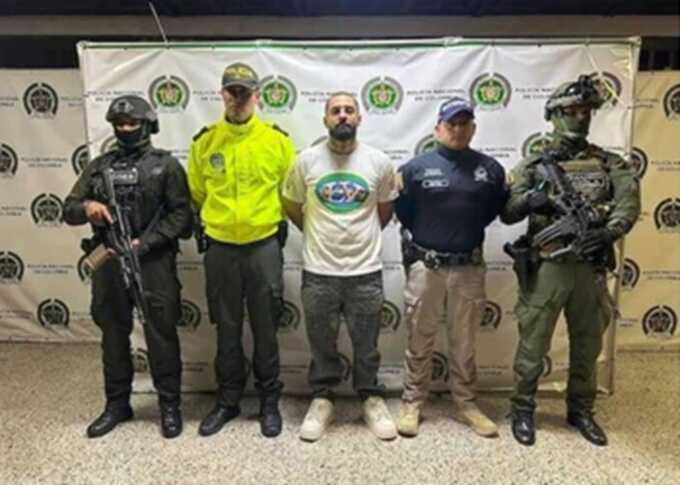Italy’s Camorra is expanding its operations into Colombia’s cocaine capital

Two high-ranking members of Italy’s Camorra mafia were arrested in Medellín, Colombia, in a multinational operation against cocaine trafficking.
Authorities detained Gustavo Nocella and Luigi Belvedere, alleged high-ranking members of the Neapolitan Camorra, in a joint operation between Colombia, Italy, Interpol, and Europol. Both were fugitives from the Italian authorities and the focus of arrest warrants for their alleged involvement in transnational cocaine trafficking between Latin America and Europe.
Nocella’s location in a pool hall in the city and the appearance of a photograph of Belvedere next to Pablo Escobar’s grave on social networks were key to the men’s capture.
The detainees, who were arrested between October 8 and 24, had a well-structured network that included false identity documents, multiple residences, and front businesses including a pizzeria. According to Luis Fernando Quijano, president of the NGO Corpades and a security expert, the captures were possible thanks to the work of the Italian authorities: “Here in Medellín, many people take pictures of themselves with Pablo Escobar’s tomb, but [Belvedere] did not understand that the Italian police were also looking for him. It was that photo that allowed them to find him.”
InSight Crime Analysis
The Camorra’s presence in Medellín is not an isolated trend, and is a response to a shift in the power structures in the Colombian drug trade in recent years that has opened up the market to foreign European buyers without the need for traditional middlemen.
The recent captures demonstrate how more Italian criminal networks are moving further down the cocaine production and transportation chain. For decades, the ‘Ndrangheta, the Calabrian mafia organization, and before it the Sicilian Cosa Nostra, maintained a dominant role in cocaine trafficking to Europe. Their influence was cemented through strategic alliances with members of the United Self-Defense Forces of Colombia (Autodefensas Unidas de Colombia – AUC) that allowed them to consolidate distribution networks, with security and logistics in the South American country.
However, the fall of the large Colombian cartels, coupled with the demobilization of the AUC and later the Revolutionary Armed Forces of Colombia (Fuerzas Armadas Revolucionarias de Colombia – FARC), opened up a window of opportunity in traditional drug trafficking that allowed foreign organizations to forge direct access to cocaine producers.
This shift has made Colombia fertile ground for new actors, a dynamic that has intensified in the last two years, Quijano said.
Historically relegated to a secondary role in cocaine trafficking, the Neapolitan Camorra has capitalized on this new context. “The presence of powerful men from the Italian mafia, who have not been [in Colombia] for not two days but a long time, shows that the Italian mafias are very keen to strengthen business along the European drug route,” said Quijano.
The Camorra’s expansion in Colombia responds to the global context of growing demand for cocaine and the active economy around the country’s coca-growing areas. Despite the Colombian government’s efforts to reduce coca leaf cultivation, international demand for cocaine continues to rise, keeping production at record levels. This situation has strengthened a trend among international buyers, who prefer to negotiate directly in Colombia to ensure better product quality in order to have more direct control of the product and reduce costs.
Featured Image: The arrest of Luigi Belvedere in Medellín, Colombia. Credit: Colombian Police.
Read more similar news:
Comments:
comments powered by Disqus

































